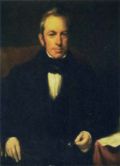File:Prodromus florae Novae Hollandiae et Insulae Van-Diemen - Brown - 1810.djvu
Link to the index page

Size of this JPG preview of this DJVU file: 369 × 599 pixels. Other resolutions: 148 × 240 pixels | 295 × 480 pixels | 473 × 768 pixels | 630 × 1,024 pixels | 2,052 × 3,333 pixels.
Original file (2,052 × 3,333 pixels, file size: 17.33 MB, MIME type: image/vnd.djvu, 464 pages)
File history
Click on a date/time to view the file as it appeared at that time.
| Date/Time | Thumbnail | Dimensions | User | Comment | |
|---|---|---|---|---|---|
| current | 10:57, 30 September 2020 |  | 2,052 × 3,333, 464 pages (17.33 MB) | Inductiveload | Importation from Internet Archive via IA-upload |
File usage
The following page uses this file:




